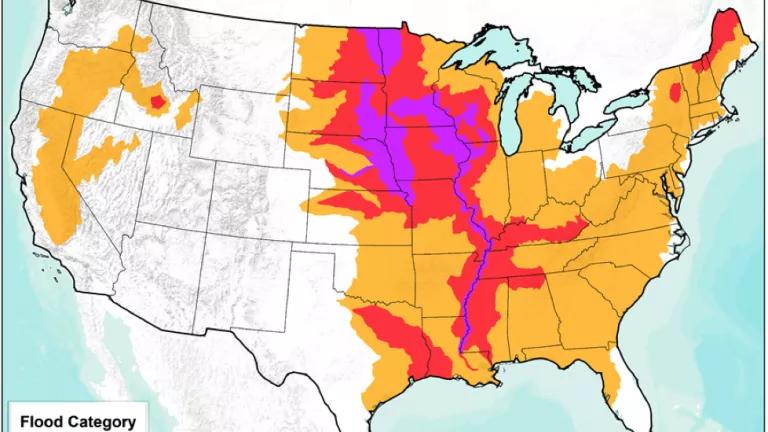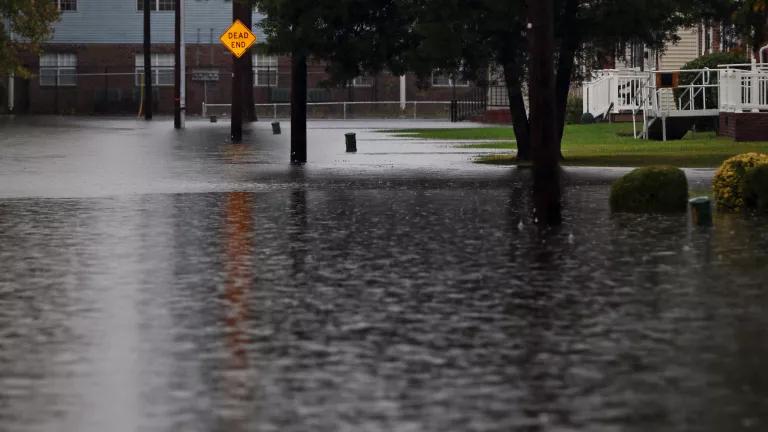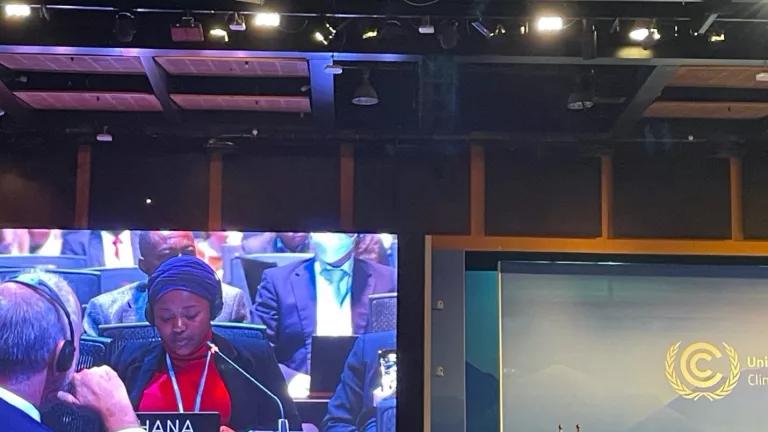Spring Flood Forecast: Rising Rivers, Widening Inequalities

The story told in the 2019 National Hydrologic Assessment—which forecasts flood risk and water supply conditions for the coming months—is a wet one. “This winter has brought above to much above normal precipitation to much of the United States,” writes the National Weather Service at the National Oceanic and Atmospheric Administration (NOAA). “Several portions of the country received accumulated precipitation exceeding 200% of average to date.” Almost all of the central and eastern U.S. faces an elevated risk of flooding this spring, and 25 states are likely to experience moderate or major flooding.
This isn’t news to people across the Midwest, who are dealing with the catastrophic results of the recent bomb cyclone. Officials in the affected states estimate that flood damages and associated economic losses total in the billions, and it’s only March. NOAA’s predictions show that over 200 million people (along with their homes, possessions, and communities) are at risk during this spring’s “potentially unprecedented flood season.”
So far, major disaster declarations in Nebraska and Iowa mean that affected areas in those states will be eligible for federal recovery funding. Additional declarations seem likely as flooding continues. But will disaster assistance reach the people who need it most?
Recent analysis from NPR shows that federally funded home buyouts (a way to permanently eliminate flood risk from a property and allow residents to move to higher ground) disproportionately take place in white communities. “Federal disaster aid is allocated based on a cost-benefit calculation meant to minimize taxpayer risk,” writes NPR reporter Robert Benincasa. “That means money is not necessarily doled out to those who need it most but rather to those whose property is worth more—and to those who own property in the first place. That mirrors the existing racial wealth gap in the United States.”
An accompanying NPR story illustrates other ways that current disaster policy widens economic inequalities. The factor that rises to the top is the privilege of time: a wealthier family with access to savings might be able to rent a temporary home and wait for buyout funding to arrive, for example, while a family without such resources might have no choice but to sell to a developer or walk away from their home. Time is also required to figure out insurance benefits, to apply for assistance, or to meet with Federal Emergency Management Agency (FEMA) representatives. The NPR story profiled a Microsoft employee who received “as much time off as he needed” from his employer in the aftermath of Hurricane Harvey; the story also described a mail carrier who worked six-day weeks and never missed a shift, even during the week of the storm. Guess who was in a better position to navigate the requirements for accessing and using disaster aid?
Of course, this is not to say that disaster recovery is intentionally unequal. "FEMA does not base disaster assistance on race, color, sex, political affiliation, religion, national origin, age, disability, language proficiency, education level or economic status," says FEMA Director of External Affairs Jessica Nalepa. "FEMA case workers do their absolute best to work with families after a disaster when many decisions are being made about recovery. If any survivor believes they are, or were, treated unfairly, we urge them to call 800-621-3362 or 800-462-7585 (TTY/TDD)."
However, broader structural inequities remain. As stated in the NPR story (and as I discussed in a previous blog post), “the bigger picture around the country is that some Americans will be more vulnerable and some will be more resilient in the face of climate change. And who wins and who loses appears to mirror existing inequalities.” There are ways to improve our nation’s approach to preventing and dealing with flood losses that could help make the process more streamlined, accessible, and equitable. As we look ahead at this spring’s flood outlook (and beyond), it is not too late to make sure that affected people and communities will have access to the resources they need, not only to recover from these floods but to stay safer in the face of future risk.
This post has been updated with a statement from FEMA.




